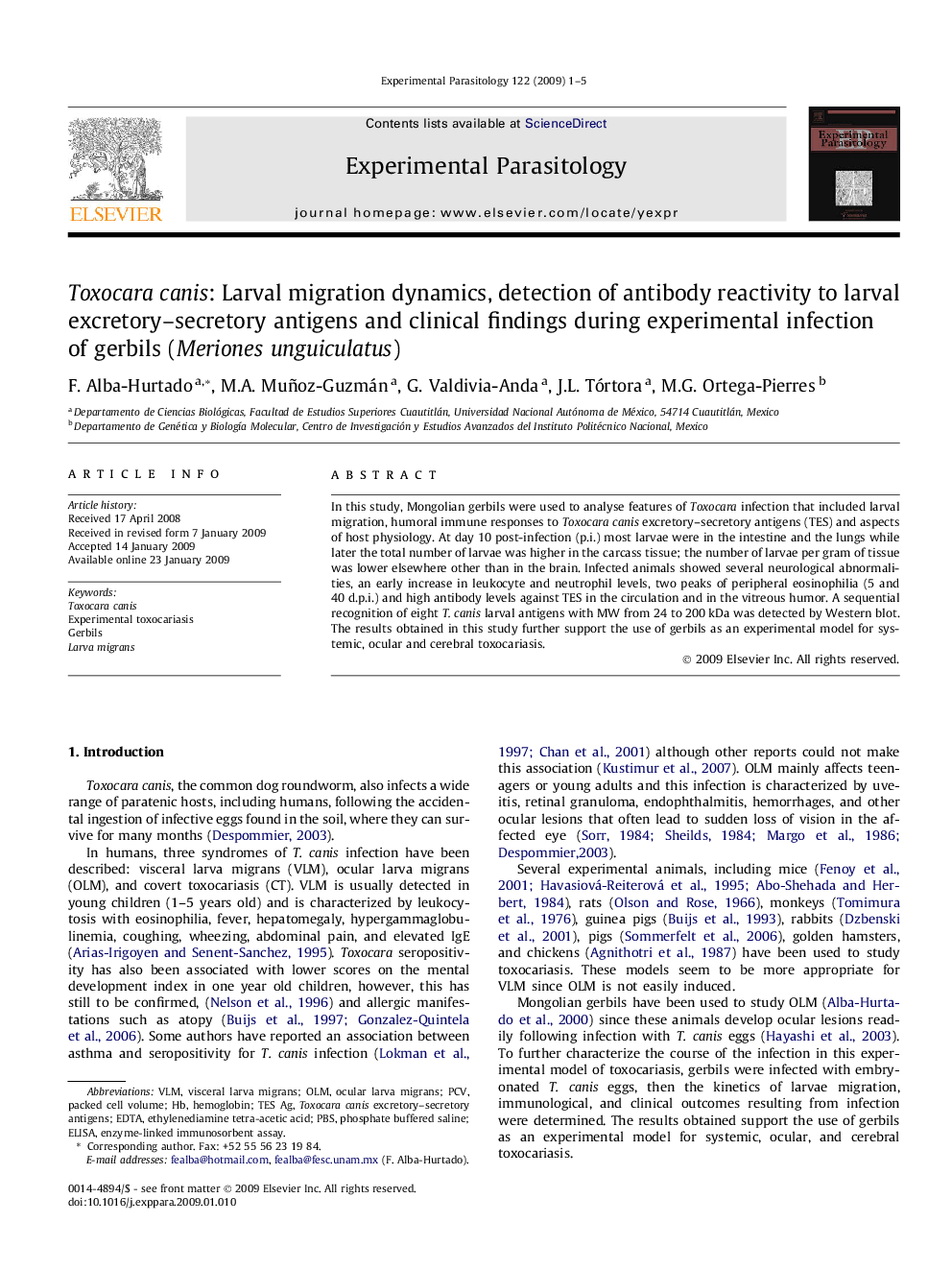| Article ID | Journal | Published Year | Pages | File Type |
|---|---|---|---|---|
| 4371925 | Experimental Parasitology | 2009 | 5 Pages |
In this study, Mongolian gerbils were used to analyse features of Toxocara infection that included larval migration, humoral immune responses to Toxocara canis excretory–secretory antigens (TES) and aspects of host physiology. At day 10 post-infection (p.i.) most larvae were in the intestine and the lungs while later the total number of larvae was higher in the carcass tissue; the number of larvae per gram of tissue was lower elsewhere other than in the brain. Infected animals showed several neurological abnormalities, an early increase in leukocyte and neutrophil levels, two peaks of peripheral eosinophilia (5 and 40 d.p.i.) and high antibody levels against TES in the circulation and in the vitreous humor. A sequential recognition of eight T.canis larval antigens with MW from 24 to 200 kDa was detected by Western blot. The results obtained in this study further support the use of gerbils as an experimental model for systemic, ocular and cerebral toxocariasis.
